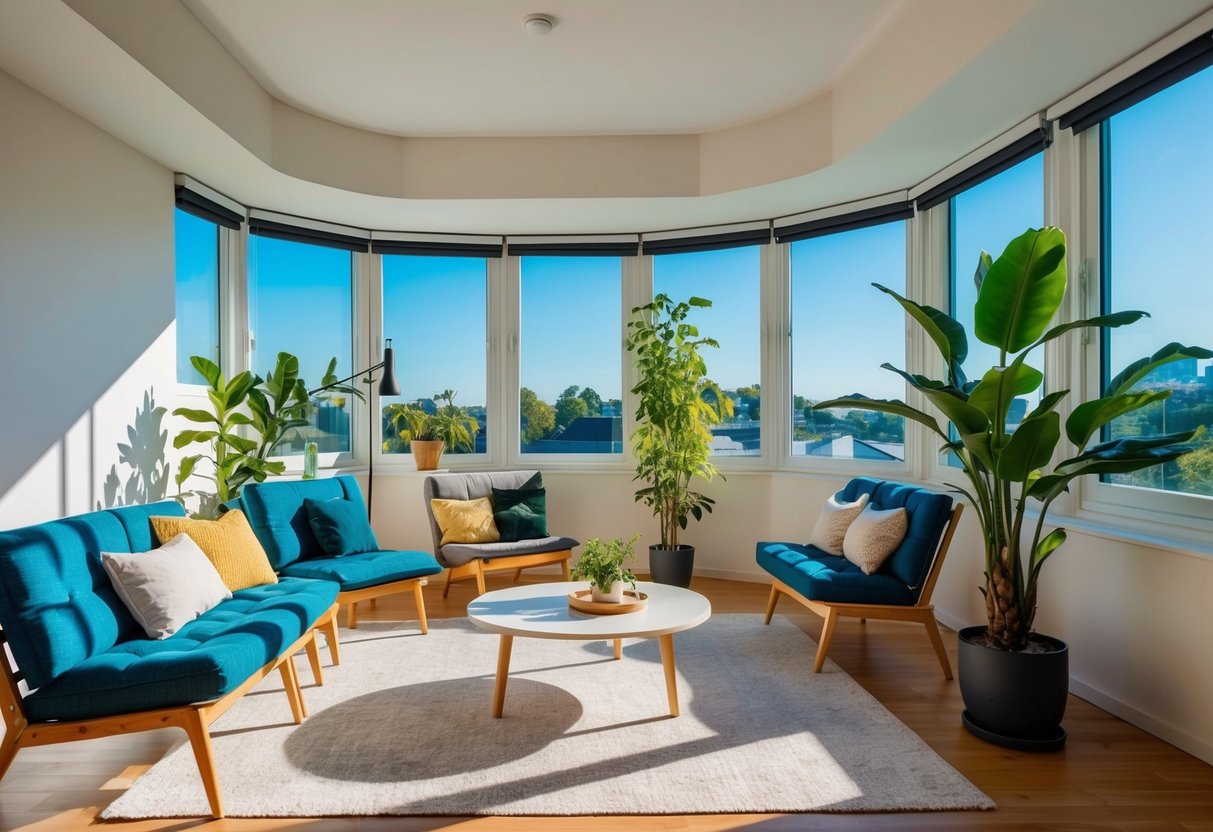Designing Multifunctional Spaces: Tips for Any Room
Strategies for Optimizing Natural Light

Maximizing natural light can significantly transform a room, making it feel more spacious and inviting. Smart placement of mirrors and sheer curtains can amplify natural light, while smart lighting solutions seamlessly adjust to day and night conditions.
Placement of Mirrors and Sheer Curtains
Using mirrors strategically is an effective way to enhance natural light. Position mirrors opposite windows to reflect and distribute sunlight throughout the room. This not only brightens the space but also creates an illusion of depth, making the area feel larger.
Sheer curtains are another critical element. They allow sunlight to filter through while maintaining privacy. Opt for light, airy fabrics in neutral tones to maximize the effect. Arranging curtains to open fully during peak sunlight hours can significantly increase the amount of light entering the room.
Smart Lighting for Day and Night
Smart lighting solutions can complement natural light during different times of the day. In daylight, these systems adjust to reduce glare and enhance comfort, often automatically regulating based on the sun’s movement.
At night, smart lights transition to artificial lighting, offering versatility and energy efficiency. Systems can be programmed to mimic natural light transitions, creating a smooth progression from daytime brightness to evening ambiance. By integrating these technologies, a room can maintain a balanced and welcoming light environment regardless of the time.
Zoning: Defining Distinct Areas
Creating distinct zones within a multifunctional space enhances its usability and organization. By using strategic design elements, such as furniture placement and color schemes, one can effectively define different areas for various activities.
Techniques for Zoning in an Open Space
In open spaces, defining zones can be achieved by thoughtfully arranging furniture. Positioning a sofa to face away from the dining area can create a visual separation. Rugs also serve as effective tools in distinguishing areas, providing boundaries without obstructing flow.
Using lighting variations is another effective approach. Pendant lights over a dining table or floor lamps in a reading nook can highlight specific zones. These elements guide purpose and aid in transitional flow between different areas.
The Power of Color Schemes and Textiles
Color schemes play a significant role in zoning. Selecting a cohesive color palette and applying distinct shades to different zones can visually separate them. A serene bedroom zone might feature calming blues, while a work area uses energizing yellows.
Textiles such as curtains and cushions can enhance separation. Contrasting textiles provide visual cues, reinforcing the purpose of each area. Different fabric patterns add layered interest while maintaining harmony in the overall design.
Enhancing Room Aesthetics
Incorporating aesthetics into multifunctional spaces requires careful attention to detail. Key elements include balancing function with style and choosing decor that adds to both appearance and usability.
Balancing Function and Style
Creating a space that feels cohesive yet practical involves striking a balance. The layout should not only look inviting but also support the activities intended for the room.
Incorporating artwork can significantly enhance aesthetic appeal. Choosing pieces that reflect the room’s purpose can set the mood. For instance, abstract art in a study room might inspire creativity.
Accent lighting is another aspect to consider. It can highlight specific areas or artwork, contributing to the atmosphere. Different types of lighting, such as ambient lighting, can also make a room more versatile, adapting to various functions throughout the day.



